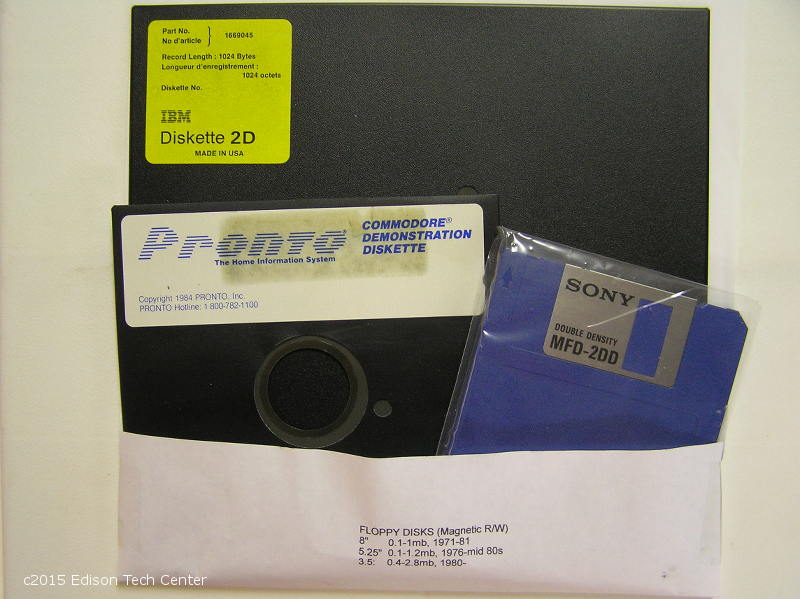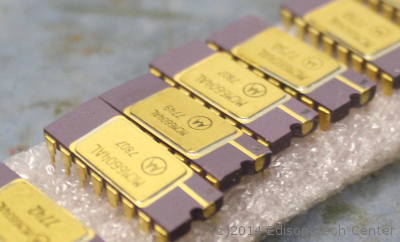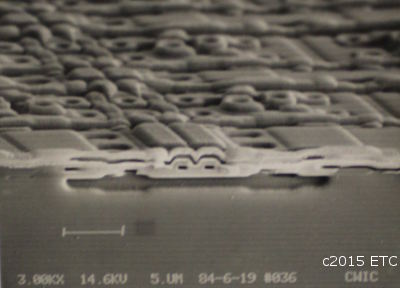Computer Memory
There are many ways to store data, click on the links to learn more about each type:
Magnetic Memory:
This type of storage uses a changeable magnetic polarity stored in a material to indicate
a '1' or '0'.
Hard Disk Drives

Three sizes of floppy disks: 8" (1971-1981), 5.25" (1976-1980s), 3.5" (1980-2000s). The 3.5 Floppy was replaced by USB flash memory From the Jack Lampkin Collection.
Floppy Disk Drives
Tape Cassettes and Reels
Random Access Memory Plain (magnetic)
Magnetoresistive Random-access Memory (MRAM)
|
Electrical Charge Data Storage:
Optical Disk Memory: Optical memory systems use reflected light off of a surface to read memory. The amount of reflected light off of a 'pit' or 'land' will tell us if the value is a 1 or 0. Compact Disks, DVDs and other GaAs infrared and red laser type systems BluRay Disks - this system uses a blue laser diode (405 nm) Other disk types |

RAM (1990s) 
4 KB RAM seen by electron microscope |
Mechanical:
From the 1930s until the 60s computers could store data in a 'mechanical' way. Parts of the computer
could be physically shaped to that of a mathematic formula. Not only could memory of equations take
on physical moving parts to help process, but punch cards could store data in the form of thin
cardboard
cards
or paper reels. This data could be read later on when a person fed the punchcards back into the system.
A player piano is a good example of physical memory, the data is stored in holes arranged on a roll of
paper. Record players contain encoded data in the physical grooves, one could theoretically build a computer using
many records and switches to run programs and compute. An interesting early mechanical computer to study
is the Turing Machine.
We talk about mechanical computers in our documentary on Control Engineer Harold Chestnut, his early computers
were used in the B-29 bomber in the 1940s. Computers controlled gun turrets and could calculate the trajectory of
attacking planes (using radar) and bullets fired from the bomber. Small mechanical computers the size of suitcases
could improve a gunner's accuracy.
Related Pages:
|
Semiconductor Electronics |
Hard Disk Drives |
Magnetic Recording |
Vacuum Tubes |
Capacitors |
More Stuff |
Sources:
How Hard Drives Work. Edison Tech Center. 2014
PC Magazine
Chintan Hossain
Wikipedia
Wizards of Schenectady Harold Chestnut. Edison Tech Center. 2010
For use of Edison Tech Center images and videos see our licensing agreement.

